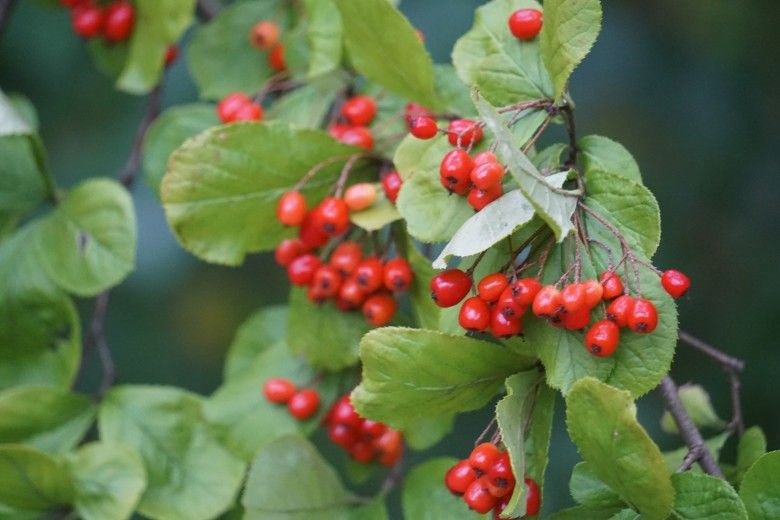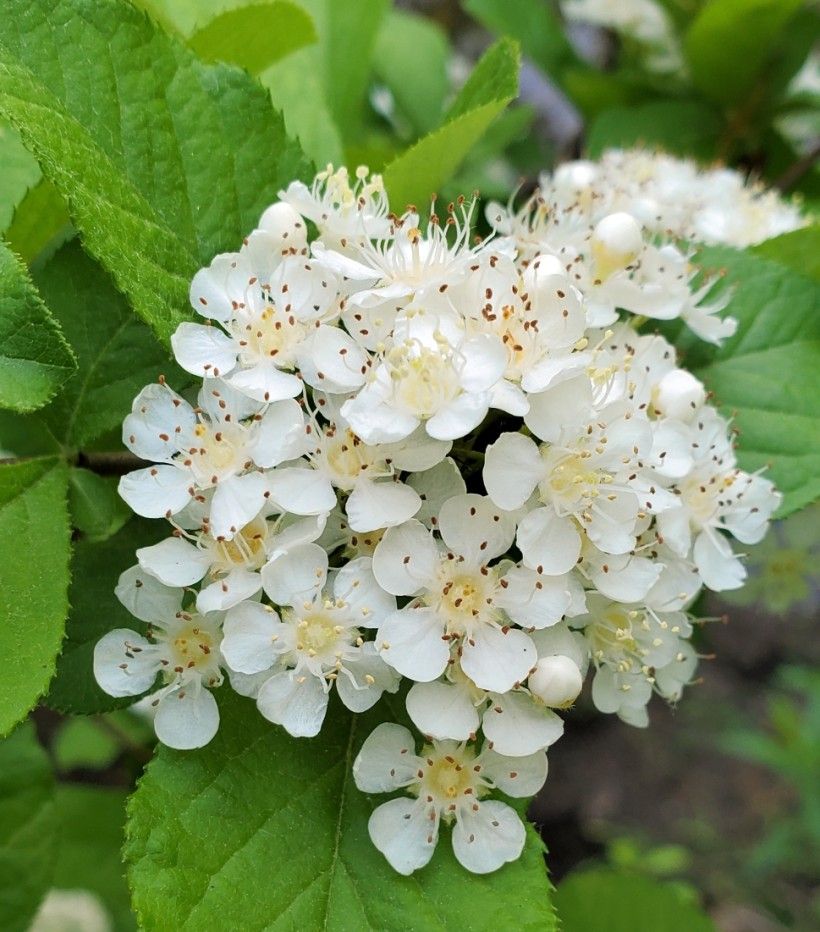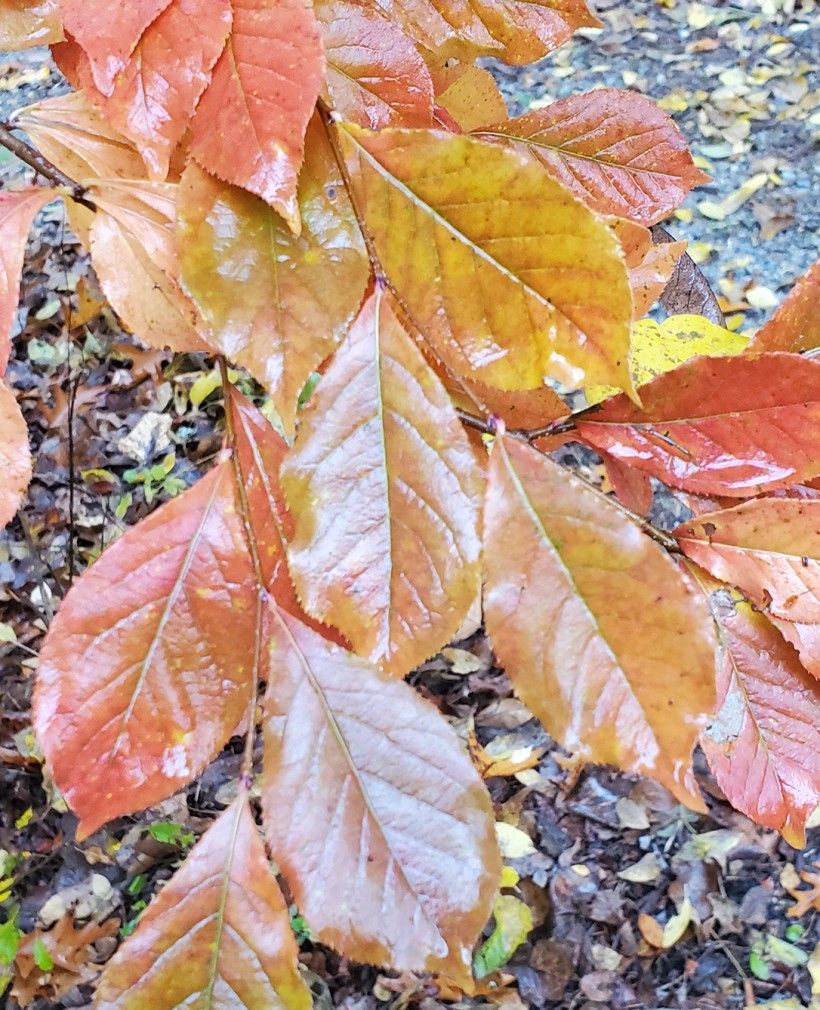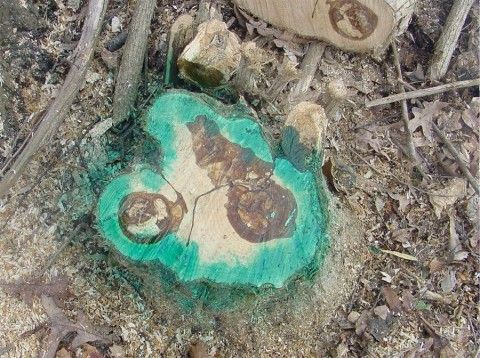Invasive Species Spotlight: Winter Control Techniques for Christmas Berry

It may seem counterintuitive, but winter is an excellent time to manage invasive plants. The right techniques implemented during winter can be very effective at controlling invasive plants, particularly woody plants like the lesser-known invasive Christmas Berry (Pourthiaea villosa).
Imagine a woodland in the winter: almost entirely free of foliage, ticks, mosquitos and poisonous plants. If you can brave the cold, winter can be the friendliest time for getting outside to battle a plant invasion. Target plants for winter management include vines, winter annuals and non-suckering woody plants. Other plants like herbaceous perennials and summer annuals will have died back to their roots or gone to seed by the time winter rolls around. Even though woody plants appear inactive in the winter, herbicide treatments can still be very effective if applied correctly. For example, let’s look at the best way to eradicate Christmas Berry during the winter.

Description
Pourthiaea villosa (previously Photina villosa) is a large shrub native to eastern Asia that is known commonly as Christmas Berry or Oriental Photina. Small five-petaled white flowers appear in two-inch-wide terminal inflorescences during the spring. Leaves are simple, alternate, and sharply serrate. They emerge in April with a greenish-bronze color before growing up to three inches long and taking on a dark green color by late summer. Leaves of individual plants can vary greatly in shape and size, making identification during the summer months a little tricky.
It may be easier to get a positive identification by looking at the berries in the autumn. The small bright red berries grow in a cluster and persist well into January, hence the common name Christmas Berry. Once you can identify the berries, this shrub becomes an excellent target for winter management.
Origin

Like most invasive plants from East Asia, Christmas Berry was introduced to North America as an ornamental plant before escaping into the wild. Christmas Berry is a relatively new invasive species to our area. For now, its range is relatively small, stretching from Connecticut to Virginia, and west only as far as Ohio. It’s identified as an invasive species in one county in Virginia, but at time of writing is not listed on any state or federal invasive species list. For this reason, there is not much information available on the best methods for controlling Christmas Berry. For now, it can be treated the same as similar woody shrubs like Amur honeysuckle or Japanese barberry.
Control
The preferred method for wintertime is known as “cut-stump,” as it involves cutting the main stem of the shrub at ground level, then applying herbicide to the stump. Herbicide only needs to be applied to the edges of the top of the stump with a spray bottle or sponge. This way the herbicide is contacting the cambium—the thin layer of tissue just behind the outer bark—and not the dead heartwood in the center of the stump. The cambium is the only part of the stump that will absorb the herbicide. Once absorbed, the cambium will carry the herbicide into the roots, effectively killing the shrub.
This method works for most non-suckering woody plants—like trees, shrubs and vines—while also having the added benefit of greatly reducing herbicide exposure to non-target plants. Glyphosate and triclopyr are the preferred herbicides for the cut-stump method.

If dealing with many individuals, blue dyes can be mixed with herbicide to keep track of which stumps have been treated. Try to wait for a relatively warm day as freezing temperatures can reduce the effectiveness of herbicides and create clogs in spray bottles. Be sure to check back in the spring for any resprouts from plants that were not fully killed. Any resprouts should be treated with a foliar herbicide at that point. Follow these steps to control Christmas Berry or any other woody invasive and you’ll be thanking yourself come springtime.
References:
- https://extension.psu.edu/tis-the-season-winter-invasive-plant-control
- https://www.davey.com/environmental-consulting-services/resources-news/winter-is-prime-time-for-invasive-woody-plant-control/
- https://www.missouribotanicalgarden.org/PlantFinder/PlantFinderDetails.aspx?taxonid=286619&isprofile=0&
- https://plants.ces.ncsu.edu/plants/pourthiaea-villosa/
Header image: Christmas Berry (Pourthiaea villosa). Photo © Sara Rall, some rights reserved (CC BY-NC)